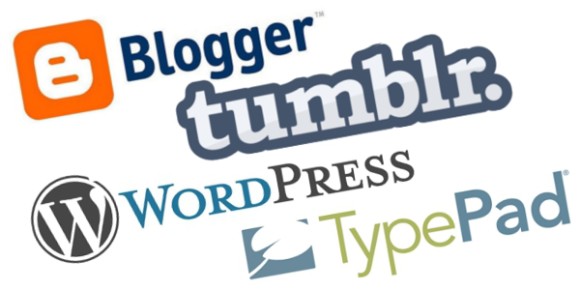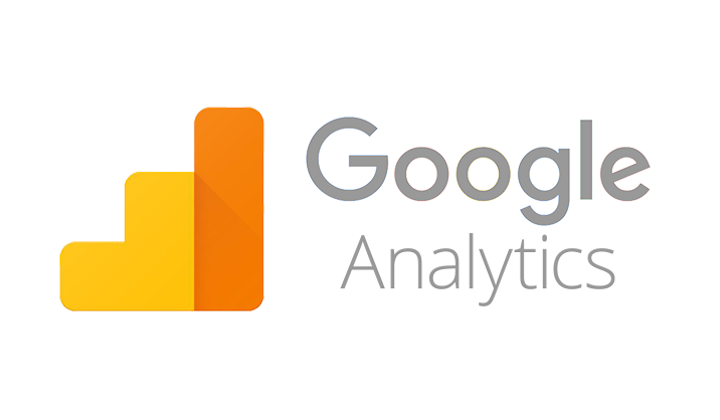Here, I have built a quick blog start checklist so that you really can be proud of what you accomplish right from the beginning.
With a Boom, you would want to start your blog. You want them wowed when someone enters your little Internet corner. And you’re going to feel successful… almost instantly. Am I correct?
Ok, let me assure you that it is not just a desirable feeling. You can pull it off, yeah.
Follow these 12 important measures right before you press the ‘start’ button to make your blog public. All of this must be done correctly.
Critical blog start checklist for a good implementation
It’s pretty quick to start a blog. Most people see a lot of new words (such as hosting and domain names and analysis). However, every step to a good start to the blog is merely a bunch of things on a checklist. Let’s cross them off.
- Start with your own domain and hosting on the right blogging platform
- Establish a course of action
- Check that the permalink layout of your blog is set to “name post”
- Write 3 blog posts, minimum
- Make your blog look good
- Get the ideal logo
- Release your blog with a hit
- Be able to assess your accomplishment
Start with your own domain and hosting on the right blogging platform

You have to make sure you use the best possible blogging tool. There are plenty of choices for you, but WordPress is by far the most popular. It’s well known that it’s the best. This is why I use it to create a blog on WordPress and recommend it.
You must buy a domain name and hosting to use WordPress (which is actually free software).
Your web address is your domain name (mine is amzecom.com). This is the thing that helps users to search their blogs online. It is specific to you, too.
Hosting gives a physical area on a cloud of your blog. This is where you store the entire content of your blog, from pictures to text and design elements.
The entire thing is much simpler if you obtain the domain and the hosting in the form of a package. while you can start a blog for free, the caveat is that you’d need a very limited-featured blog-publishing service that won’t enable you to expand. Even if you plan to continue on your own until your blog has been published, it will be a lot of trouble (even switching WordPress.com to WordPress.org takes time!!). Here’s how to move Blogger to WordPress if you need assistance switching from Blogger.
This is why my most honest recommendation is to go from the start. This means that you must make a tiny starting investment, but nothing breaks the bank.
Make sure you pick a decent web hosting service and get your domain name to start my blog launch checklist.
Bluehost is the hosting provider I have used, paid for, and suggested directly. It’s super simple and convenient to set up an account with them and even offer your first-year domain name for free.
Establish a course of action

You need a roadmap if you want to establish a successful blog.
You need to find out what type of blog you want.
And you need to set, write down, and follow your progress religiously, long and short-term objectives.
The Smart Blog Planner will allow you to be active and coordinated. It will also provide you with a great forum to create an editorial calendar, scheduled donations, and to complete articles to create the first product.
A few years ago I developed the Smart Blog planner and I found immediate improvements in my thinking and income as soon as I began using it. Due to these tremendous advantages that I found in my own blogging career, I wanted to put it into a digital commodity so that others could do it too.
You don’t miss out on the rewards of having a calendar if you’re serious about blogging.
Now is the time to brainstorm your blog about how to make money. I advocate beginning with affiliate marketing, because it is risks-free, costs no one cent, and in preparation for your blog launch, you can even add affiliate links to your posters.
ShareASale is my preferred partner network. They have thousands of partner programs, which ease the handling of passwords.
I also suggest signing up with the affiliate program of Amazon, since it fits with almost every niche.
Check that the permalink layout of your blog is set to “name post”
The complete URL for every blog post or website is the permanent link you see. A permalink offers for each blog post and page a special and permanent address.
For starters, the permalink is https://www.amzecom.com/blog-launch-checklist for this article.
The permalink connection arrangement is used to name your individual posts or pages in the WordPress format. By extension, a post has been published in the URL for the year, month, and day. This may be helpful for news or pages.
But if you plan to write mostly evergreen content, including a date in the permalink structure, it will be appropriate for future years:
- Put readers off – no one likes to spend time reading obsolete counsel.
- Results in broken links shall you plan to edit and republish an older post (the date will immediately change when you do this) (the date will automatically change when you do this). If other users are connected from their pages to their original message, they will also lose the connections and the SEO advantages they offer.
You can use Settings >> Permalinks to adjust the permalink structure.
I use the name option post and for most blogs, this is a permanent connection framework. Don’t forget to save the changes until you pick the current permalink structure!
WARNING: Changing the permanent link structure could lead to broken links mostly when you have already started posting posts or pages on your blog. To correct this, every one of your current posts needs to be redirected. A free plug-in will help, but it might take you some time based on how many articles you have written.
Write 3 blog posts, minimum
All you have to do is start your blog with three strong blog entries. Sure, you can reach for more if you are a super easy writer who can write comprehensive and informative articles in record time.
I think 3 are the amount of magic. You will not see your blog nude, and there will be plenty of content on your first visit for your first reader.
However, what I find is that in the following days, you can post more material. For the first two months, two posts a week are great sauce! Then if you like, you could slow down.
I wouldn’t even dream to write a few posts a week now. Other activities, such as composing my next e-mail newsletter and supporting content, are more important for me. Furthermore, I really want to live and emphasize self-care.
Go to your WordPress dashboard to write the first post and pick Posts>> In the left column, add new.
Fast checklist for blog posts of the murderer:
- Compose your post: You can write in WordPress directly or in a text editor and paste it in WordPress when you finish it. Any post should solve a dilemma. To get your point through, use as many words as you NEED. No more, no less! No less!
- Write small paragraphs(2-3 sentences, 5 lines max) Size the submissions (use subheaders, bullet points, bold and italics)
- Use an online grammar checker to correct your posts. Grammarly is my favorite
- Attach at least one picture to Pinterest per post.
- Link to topics you have previously published
- End blog with a question to encourage dedication
- Name your article something important people are searching for
- Change the permalink of your post if desired. A shorter, all needless words omitted permalink is typically easier.
Make your blog look good

You will get a better understanding of how your blog feels after you have written the first couple of entries.
You might be tempted to retain it if you’ve activated a free theme.
However, for a variety of reasons, I suggest you look for a premium theme.
- Most bloggers in the WordPress repositories use free themes, ensuring that a lot of blogs look about the same. When you’re like anyone else, you can’t stand out.
- There is no funding for free themes. A premium service provider like Bluchic, on the other hand, will be as far as you upload and set up your theme.
- These free themes aren’t up to date. The security gaps that hackers can access your blog are left. Not worth the risk!
There are several cool subjects, but I recommend avoiding shiny object syndrome and choosing one that would suit your niche and needs.
Foodie Pro’s just fine, for instance, if you run a food blog. Refined Pro is absolutely gorgeous if you intend to have your blog monetized by goods and services. Divi is a more advanced subject but can develop in unprecedented ways.
Get the ideal logo

A unique and recognizable logo’s requirement in any company and blogs are nothing new.
When your blog loads in their tab, the very first thing a reader can look for is your logo. It’s the first thing you get to see when you give them your business card.
The mood for your brand is set by your logo. It needs to attract and convey the vision of your brand.
The first step in building a successful brand is an eye-catching logo.
You should create your own logo if you are artistically inclined. That’s what I did, precisely.
You may use Canva, PicMonkey, or advanced tools, like Photoshop, to develop your own logo.
If graphics are not your cup of tea, and you have $5 to save your ass, it is a simple and elegant solution to employ a talented artist on Fiverr. In 48 hours several designers will have the logo ready and even the standard kit normally contains some changes.
Release your blog with a hit
Using social media for promotion has become a trend and is an easy and effective way to boom. Instagram and Pinterest are on the top right now.
Instagram was not built to help you get visitors on your site though, and it could take some time to wait before Google sends users your way.
Pinterest is your Best Friend and in a very brief amount of time, Pinterest will burst the traffic of your blog.
When you go through the launch checklist of this site, you join related Pinterest community boards.
Then share in all the groups you’ve previously been with to raise on your launch day all your Pinterest-friendly photos.
Be able to assess your accomplishment

You need to monitor each one of your users if you want to assess the progress of your blog launch.
You know how many people are reading your blog and where your favorite posts come from. Moreover, there are advertisers and PR’s who would like to determine if you suit their promotions.
Google Analytics is the mainstream of the industry and implementation is super fast.
- Register for an account on Google Analytics.
- Check the Admin tab and press Create New Account. Set up your account by filling in your password, website name, URL, etc. (can be the same as the name of your blog). Select Get ID to track.
- The terms and services are appropriate.
- It’s going to launch a new tab. Copy the tracking code of the site.
- To add monitoring to the header line, add a free plug-in including Insert Headers and Footers.
Also, register for a Google Search Console account and move the analytics to the next level.
This is a free tool that helps you to know a great deal about your blog, add a sitemap, warn you about web failures, and won’t hold back the same keywords you use to search your Google blog.
In Google Search Console, connect and check your blog. I consider using the upload option for the HTML file if you know how to get to the root folder of your webpage. In that way, any time the subject is changed you won’t need to think about the authentication code is disabled.
Finally, link your Google Analytics account to your Google Search Console account to use all of the above-noted keywords.


